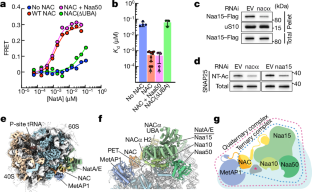2024-08-28 ノースカロライナ州立大学(NCState)
<関連情報>
- https://news.ncsu.edu/2024/08/nc-opioid-treatment-providers/
- https://www.sciencedirect.com/science/article/pii/S2949875924001863
オピオイド使用障害に対するエビデンスに基づく治療は、ノースカロライナ州の居住型薬物使用サービスの提供者によって広く利用できず、しばしば推奨されていない Evidence-based treatment for opioid use disorder is widely unavailable and often discouraged by providers of residential substance use services in North Carolina
Jennifer J. Carroll, Nabarun Dasgupta, Bayla Ostrach, Taleed El-Sabawi, Sarah Dixon, Brandon Morrissey, Roxanne Saucier
Journal of Substance Use & Addiction Treatment Available online: 22 August 2024
DOI:https://doi.org/10.1016/j.josat.2024.209474

Highlights
- Most residential treatment providers do not allow access to opioid agonist treatment.
- Half of all providers made discouraging or stigmatizing comments about medication treatment.
- Availability of opioid agonist treatment is more common but still rare among licensed providers.
- The most common provider type is faith-based, is abstinence only, and mandates labor.
Abstract
Introduction
Opioid agonist treatment (OAT) is the only treatment for opioid use disorder (OUD) proven to reduce overdose mortality, yet access to this evidence-based treatment remains poor. The purpose of this cross-sectional audit study was to assess OAT availability at residential substance use services in North Carolina.
Methods
We conducted a state-wide inventory of residential substance use service providers in North Carolina and subsequently called all providers identified, posing as uninsured persons who use heroin, seeking treatment services. Program characteristics, as reported in phone calls, were systematically recorded. We used Fisher’s exact tests to assess what program characteristics were associated with OAT availability and with staff making discouraging comments about OAT. We used unsupervised agglomerative clustering to identify facilities with similar characteristics.
Results
Of the 94 treatment providers identified, we successfully contacted and collected data from 66. Of those, only 7 (10.6 %) provide OAT on site; an additional 9 (13.6 %) allow OAT through an outside or community-based prescriber. Only 8 (12.1 %) providers were licensed to provide residential substance use treatment. Staff from 33 (50.0 %) providers made negative, discouraging, or stigmatizing remarks about OAT—for example, that OAT substitutes one addiction for another or does not constitute “true recovery.” OAT availability was positively associated with a provider holding a state license for any substance use-related service (41.9 % vs 8.6 %, p = 0.002) and offering 12-step programming (36.1 % vs. 10/0 %, p = 0.020). OAT availability was negatively associated with faith-based programming (6.1 % vs 42.4 %, p = 0.001), dress codes (5.3 % vs 50.0 %, p < 0.001), and mandates that residents work in a provider-owned and -operated commercial enterprise (5.0 % vs 32.6 %, p = 0.026). Cluster analysis revealed that the most common (n = 21) type of service provider in North Carolina is an unlicensed, faith-based organization that prohibits OAT, imposes a dress code, and mandates that residents work, often in provider-owned and -operated commercial enterprises.
Conclusion
Evidence-based treatments for OUD are largely unavailable at providers of residential substance use services in North Carolina. The prohibition of OAT occurs most often among providers who are unlicensed and impose labor and/or 12-step mandates on residents. Changes to state licensure requirements and exemptions may help improve OAT availability.

